
Exile is a series of role-playing video games created by Jeff Vogel of Spiderweb Software. They were released as shareware titles for Macintosh and Windows systems. Exile III was also ported to Linux by a third party. There were four games released in the series. All of the games were later revived in the Avernum series. Common to all games in the Exile series are 2D graphics and basic sound. The graphics in the first versions of Exile I and II had simple textures, colours and outlines, which were then replaced in later versions with Exile III's graphics. The games are designed to be non-linear and long in gameplay length.

Heretic is a dark fantasy first-person shooter video game released in December 1994. It was developed by Raven Software and published by id Software through GT Interactive.

Rise of the Triad: Dark War is a first-person shooter video game, developed and published by Apogee Software in 1995. The player can choose to play as one of five different characters, each bearing unique attributes such as speed and endurance. The game's story follows these five characters who have been sent to investigate a deadly cult, and soon become aware of a deadly plot to destroy a nearby city. A remake was designed by Interceptor Entertainment and released by Apogee Games in 2013. The shareware version of the game is titled Rise of the Triad: The HUNT Begins.
Shareware is a type of proprietary software that is initially shared by the owner for trial use at little or no cost. Often the software has limited functionality or incomplete documentation until the user sends payment to the software developer. Shareware is often offered as a download from a website. Shareware differs from freeware, which is fully-featured software distributed at no cost to the user but without source code being made available; and free and open-source software, in which the source code is freely available for anyone to inspect and alter.

Zork is a text adventure game first released in 1977 by developers Tim Anderson, Marc Blank, Bruce Daniels, and Dave Lebling for the PDP-10 mainframe computer. The original developers and others, as the company Infocom, expanded and split the game into three titles—Zork I: The Great Underground Empire, Zork II: The Wizard of Frobozz, and Zork III: The Dungeon Master—which were released commercially for a range of personal computers beginning in 1980. In Zork, the player explores the abandoned Great Underground Empire in search of treasure. The player moves between the game's hundreds of locations and interacts with objects by typing commands in natural language that the game interprets. The program acts as a narrator, describing the player's location and the results of the player's commands. It has been described as the most famous piece of interactive fiction.
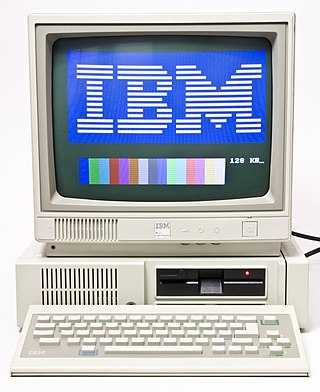
The IBM PCjr was a home computer produced and marketed by IBM from March 1984 to May 1985, intended as a lower-cost variant of the IBM PC with hardware capabilities better suited for video games, in order to compete more directly with other home computers such as the Apple II and Commodore 64.

The Color Graphics Adapter (CGA), originally also called the Color/Graphics Adapter or IBM Color/Graphics Monitor Adapter, introduced in 1981, was IBM's first color graphics card for the IBM PC and established a de facto computer display standard.
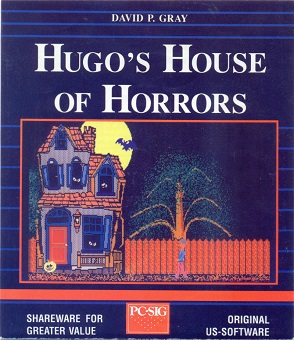
Hugo's House of Horrors is a parser-based adventure game designed by independent software developer David P. Gray and published as shareware in 1990. The game follows the character Hugo as he searches for his girlfriend Penelope in a haunted house. To progress through the game, the player uses items and interacts with the environment to solve puzzles and access more rooms in the house. The gameplay was inspired by Leisure Suit Larry in the Land of the Lounge Lizards. Hugo's House of Horrors was praised for its environment and atmosphere, but was criticized for its plot and visual design. It was followed by two sequels: Hugo II, Whodunit? and Hugo III, Jungle of Doom!, and a spin-off first-person shooter game, Nitemare 3D.

Softdisk was a software and Internet company based in Shreveport, Louisiana. Founded in 1981, its original products were disk magazines. It was affiliated and partly owned by paper magazine Softalk at founding, but survived its demise.
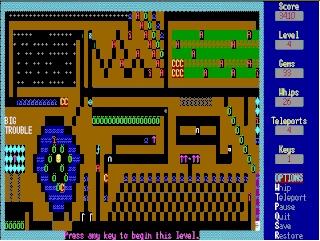
Kroz is a series of Roguelike video games created by Scott Miller for IBM PC compatibles. The first episode in the series, Kingdom of Kroz, was released in 1987 as Apogee Software's first game. It was also published on Big Blue Disk #20. Kroz introduced the scheme of the first episode being free and charging money for additional episodes, a technique which defined the business model for Apogee and was adopted by other MS-DOS shareware publishers.
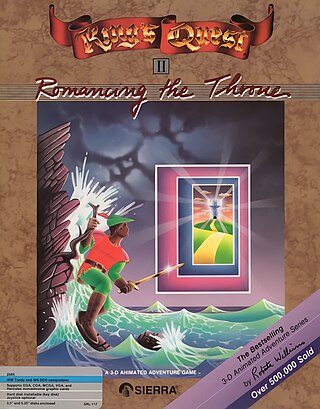
King's Quest II: Romancing the Throne is the second installment in the King's Quest series of graphic adventure games by Sierra On-Line. It was originally released in 1985 for PC DOS/PCjr, and later made available for the Apple II/IIGS, Atari ST, and Amiga. It uses the same AGI game engine as King's Quest I: Quest for the Crown and features King Graham as the player character. The title is a spoof of the 1984 film Romancing the Stone.
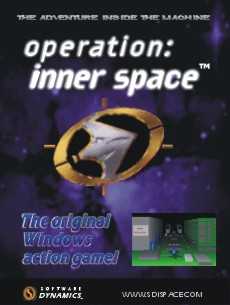
Operation: Inner Space is an action game developed in 1992 and published in 1994 by Software Dynamics for Windows. The player's mission is to enter the computer in a spaceship and recover the icons and resources that have been set loose by an invasion, and ultimately to destroy the "Inner Demon". The player interacts with other spacecraft along the way, and can compete in races for icons.

Planet's Edge is a 1992 space science fiction role-playing video game developed by New World Computing with Eric Hyman as the lead designer. The game's plot centers on investigating the sudden disappearance of planet Earth, by venturing out into the universe from a Moon base. There are two main play modes: real-time exploration and combat using various spacecraft, and turn-based exploration, problem solving, and combat on the surface of dozens of planets. The game features a variety of objects, weapons, and missions, though it lacks any detailed experience or stats system for the four characters the player controls.

Boppin' is a puzzle-oriented video game created by Jennifer Diane Reitz in 1991, developed under the company name Accursed Toys and published by Karmasoft for the Amiga computer. Around that time Karmasoft held a level design contest. The game sold poorly with 284 copies, so Jennifer got it republished by Apogee Software with up to 256 colors on screen. Due to mature content containing blood and seppuku, Apogee included a disclaimer in the manual that the game contained potentially offensive imagery, as well as part of a manifesto from Accursed Toys stating that their games were produced for an audience of adult gamers who are mostly 25 and older.

Genghis Khan, original full title Aoki Ōkami to Shiroki Mejika: Genghis Khan (蒼き狼と白き牝鹿・ジンギスカン), is a 1987 turn-based strategy game developed by Koei, originally released for the NEC PC-9801, MSX and Sharp X68000 in 1988, the DOS and NES in 1990, and the Amiga in 1990. It is actually the second game in the series, after a 1985 Aoki Ōkami to Shiroki Mejika, also for PC-88, PC-98, and MSX.

Zone 66 is a top down, multidirectional shooter released in 1993 for IBM PC compatibles as shareware. The game was created by a North American demoscene group called Renaissance, and was published by Epic MegaGames. The game shipped on a self-booting disk, so it could bypass MS-DOS and load into a custom protected mode environment.

The Prisoner is an adventure game for the Apple II published by Edu-Ware in 1980. It is loosely based on the 1960s television series The Prisoner and incorporates that show's themes about the loss of individuality in a technological, controlling society. The player's role is that of an intelligence agent who has resigned from his job for reasons known only to himself, and who has been abducted to an isolated island community that seems designed to be his own personal prison. The island's authorities will use any means—including coercion, disorientation, deception, and frustration—to learn why their prisoner has resigned, and every character, location, and apparent escape route seem to be part of a grand scheme to trick the player into revealing a code number representing the prisoner's reason for resigning. The game occasionally breaks the fourth wall by acknowledging that a game is being played.

Murder on the Zinderneuf is a video game designed by Jon Freeman and Paul Reiche III and one of the first six games published by Electronic Arts in 1983. It was developed for the Apple II, Commodore 64, Atari 8-bit computers, and IBM PC.

Sargon III is a computer chess program. It is a sequel to Sargon II.

Crimsonland is a top-down dual stick arena shooter video game with role-playing elements. It was developed by Finnish studio 10tons Entertainment and published by Reflexive Entertainment in 2003. In 2014 a re-release through digital distribution followed.




















